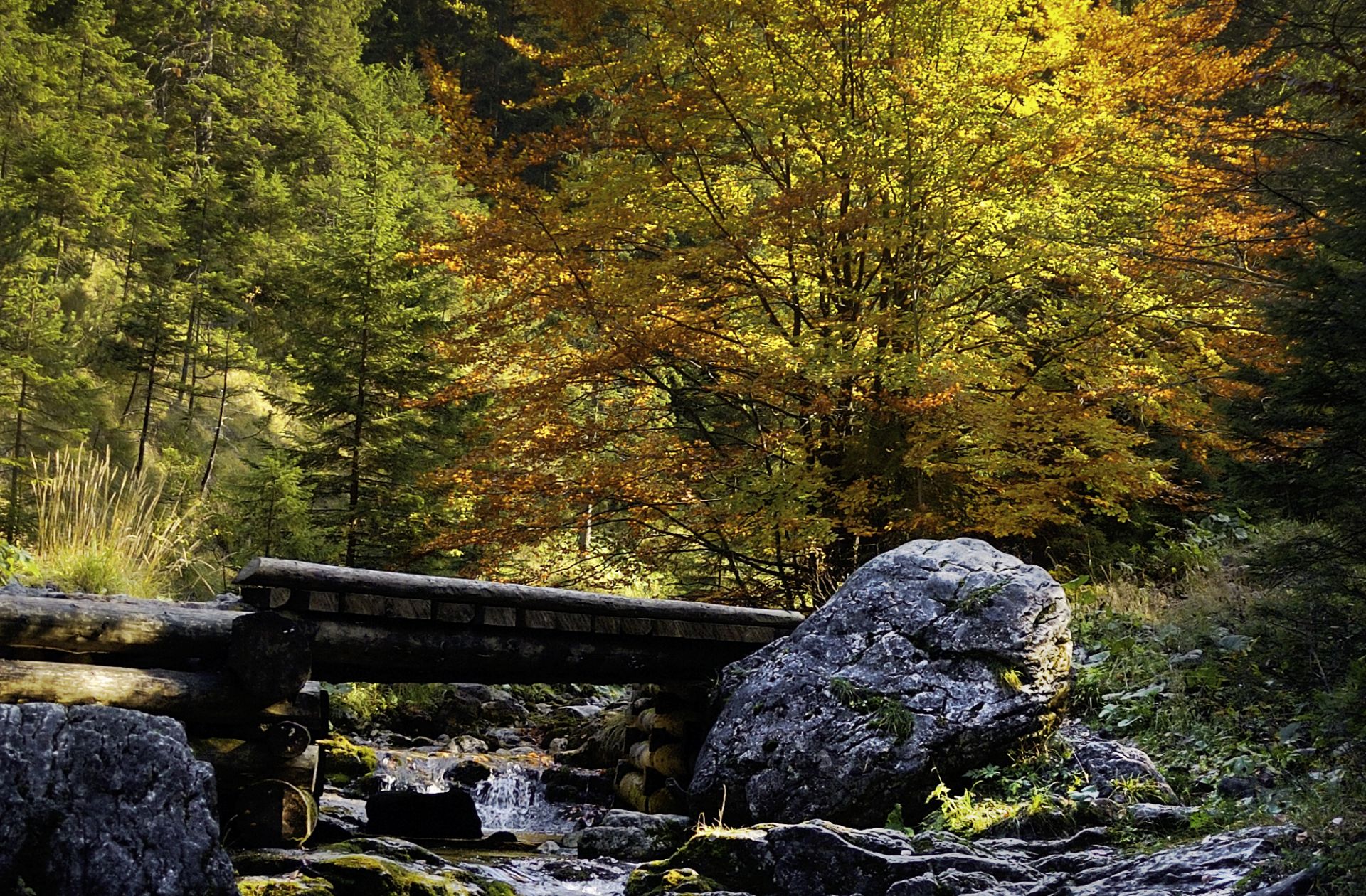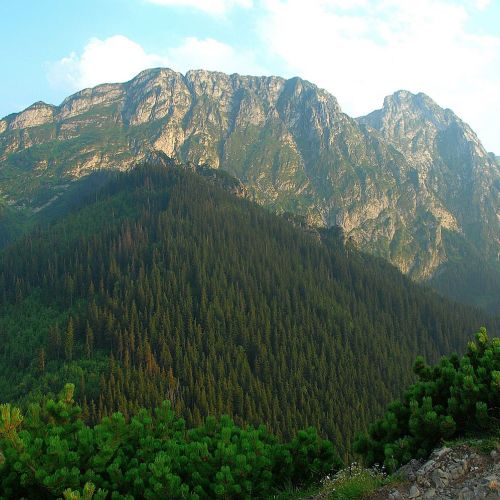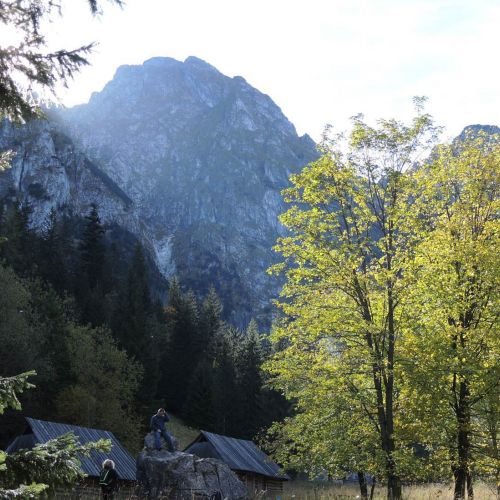Białego Valley is considered as one of
the mose colorful mountain valleys. Similarly to Strążyska Valley –
easily accesible from Zakopane center – is also a popular trip
destination in winter.
We begin our journey in the place where
yellow trail connects with Path under Regle. There is a booth at the
entrance, where we should buy Tatra National Park entry tickets.
Białego Valley astonishes with various dolomite and lime stone
forms. Our trail leads through Biały Stream, on which cascades and
plunge pools are created. After over a dozen minutes of march, on the
left side we cross the former adit's opening. It is here where
Soviets conducted uranus deposits search after the World War II.
Stone path gradually ascends and after a while connects with Ścieżka
nad Reglami (black signatures). From that moment, till we reach
Strążyska Valley bottom, we will travel along black trail. Spruces
will be our companions, as we enter the place of natural forest
renewal. Rowans and willows are more common there, taking dominance
over spruces. After around 15 minutes from trail crossing, we arrive
at Czerwona Pass (there are wooden benches where you can take a
rest). Its name (Red Pass) is linked with brown ground color,
signifying presence of iron compounds, in this case included in
eroding Triassic slates. Black signs guide us from the pass into two
ways – either straigh into Strążyska Valley or in Sarnia Skałka's
direction (around 10 minutes).
Those who will pick the second choice
will surely not regret. Admittedly we will have to give it a little
more effort, but we will certainly be rewarded by views. From
Czerwona Pass we direct ourselves north. After a while, our stone
path enters the forest. We must be careful here, as it is steep and a
little bit narrow here. Only few minutes of pine-enveloped walk and
we arrive under the dome of Sarnia Skała. More harships await: the
trail leads through rocks without any supporting facilities. It's
wise to wait until tourists descending from the top leave this
fragment and only after this to begin "climbing". Passing
each other on slippery rocks is basically impossible. At last, Sarnia
Skała offers magnificent sights: on neighbouring Giewont with
impressive 600 meters northern wall, Czerwone Wierchy fragment and
other, far more distant summits of West Tatra, like Kominiarski
Wierch. On the other side, we can see Gąsienicowa Hall's
surroundings, Gorce, Beskidy and also a valley in which Zakopane has
its nest.
After returning the same way on
Czerwona Przełęcz, we need around 35 minutes to get to Strążyska
Valley. The trail is not technically difficult, while during and
after the rain it might get very slippery. We must be careful here
and try to avoid exposed tree branches. Strążyska Clearing descent
into the valley outlet should take us around 35 minutes.
 Dobra
Dobra











